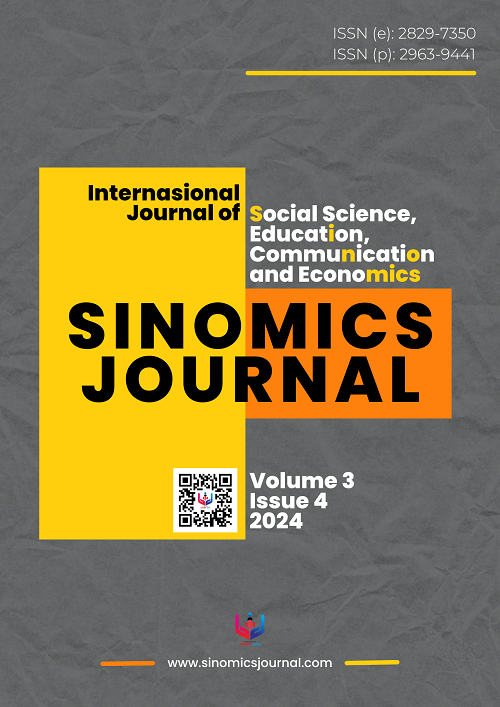The Effect of Agricultural Infrastructure Policies on Rice Production in Indonesia
DOI:
https://doi.org/10.54443/sj.v3i4.415Keywords:
Policy Implementation, agriculture, Productivity, infrastructureAbstract
The purpose of this study is to analyze how government policies related to agricultural facilities and infrastructure have an impact on rice production in Indonesia. This study uses panel data from 34 provinces in Indonesia observed for 8 years from 2015 to 2022. Maximum Likelihood (M) Robust Least Square Method (RLS) regression method was used in this study. The results showed that all variables studied, namely extension, irrigation development, reservoir development, tractor assistance, and subsidized fertilizer, had a positive impact on rice production in Indonesia. Therefore, to achieve food security and improve the economy of farmers, the government must continue and develop these agricultural policies.
Downloads
References
Ariska, F. M. (2022). Analisa Komparatif Usahatani Padi Sawah Sistem Irigasi dan Non Irigasi di Kecamatan 2x11 Kayutanam Kabupaten Padang Pariaman. Jurnal Agrimals, 2(1).
Beattie, B. R., & Taylor, C. R. (1996). Ekonomi Produksi (D. S. Me. Josohardjono & D. G. Me. Sumodiningrat (eds.)). Yogyakarta, Gadjah Mada University Press.
Debertin, D. L. (2012). Agricultural Production Economics (2nd ed.). Lexington, David L. Debertin.
Efgivia, M. G. (2024). Statistik dan Probabilitas (N. S. Wahyuni (ed.)). Penerbit Widina Media Utama, Bandung. http://scioteca.caf.com/bitstream/handle/123456789/1091/RED2017-Eng-8ene.pdf?sequence=12&isAllowed=y%0Ahttp://dx.doi.org/10.1016/j.regsciurbeco.2008.06.005%0Ahttps://www.researchgate.net/publication/305320484_SISTEM_PEMBETUNGAN_TERPUSAT_STRATEGI_MELESTARI
Ernawati, E., Masbar, R., Majid, M. S. A., & Jamal, A. (2021). Production and marketing efficiency of patchouli oil industry in Indonesia. Regional Science Inquiry, 13(2), 135–148.
Hasanah, S. T. (2012). Pendeteksian Outlier pada Regresi Nonlinier dengan Metode statistik Likelihood Displacement. CAUCHY: Jurnal Matematika Murni Dan Aplikasi, 2(3), 177–183. https://doi.org/10.18860/ca.v2i3.3127
Herdiansyah, H., Antriyandarti, E., Rosyada, A., Arista, N. I. D., Soesilo, T. E. B., & Ernawati, N. (2023). Evaluation of Conventional and Mechanization Methods towards Precision Agriculture in Indonesia. Sustainability (Switzerland), 15(12). https://doi.org/10.3390/su15129592
Hidayatulloh, F. P., Yuniarti, D., & Wahyuningsih, S. (2015). Regresi Robust Dengan Metode Estimasi-S. Jurnal EKSPONENSIAL, 6(2), 163–170.
Jin, B. J., Wu, R., & Liu, R. (2002). Rice Production and Fertilization in China. Better Crops International, 16(May), 26–29.
Lina, S. H., Hesti, Y., & Ali, P. (2022). Managing fertilizers and water treatments on rice production and N2O emission. IOP Conference Series: Earth and Environmental Science, 1039(1). https://doi.org/10.1088/1755-1315/1039/1/012012
Magezi, E. F., Nakano, Y. N., & Sakurai, T. S. (2022). Mechanization in Tanzania: Impact of Tractorization on Intensification and Extensification of Rice Farming. The Rice Green Revolution in Sub-Saharan Africa: Issues and Opportunities. https://doi.org/https://doi.org/10.1007/978-981-19-8046-6
Meyer, D. F. (2019). An Assessment of the Importance of the Agricultural Sector on Economic Growth and Development in South Africa. September, 240–255. https://doi.org/10.20472/iac.2019.052.041
Nakano, Y. (2023). The Case of Tanzania: Effectiveness of Management Training on Rice Framing and Farmer-to-Farmer Extension. Natural Resource Management and Policy. https://doi.org/https://doi.org/10.1007/978-981-19-8046-6_4
Nardi, Nugraha, A. T., & Aminudin, I. (2021). Peran embung terhadap Indeks Pertanaman Padi dan faktor yang mempengaruhi produksi padi (studi kasus lokasi embung Kabupaten Bogor, Jawa Barat). Jurnal Buana Sains, 21(1), 39–50.
Nicholson, W., & Snyder, C. (2017). Microeconomic Theory Basic Principles and Extensions (12th Editi). Singapore, Cengage Learning Asia Pte Ltd.
Panupong, D., Anupong, W., Prathanthip, K., & Chalermpon, J. (2018). Efficiency Differences on Rice Production Between Thailand and Vietnam Using Meta-frontier. Int. J. Manag. Bus. Res, 8(1), 22–33.
Pide, A. (2014). Ekonomi Mikro (Teori dan Aplikasi di Dunia Usaha). Yogyakarta, Andi Offset.
Pradewi, E. D., & Sudarno, S. (2012). Kajian Estimasi-M IRLS Menggunakan Fungsi Pembobot Huber Dan Bisquare Tukey Pada Data Ketahanan Pangan Di Jawa Tengah. Media Statistika, 5(1), 1–10. https://doi.org/10.14710/medstat.5.1.1-10
Sary, S., Phearin, B., Sereyvatha, S., Saren, S., & Kulyakwave, P. D. (2023). An analysis of the Factors Affecting the Rice Yield in the Dry Season in Households Farming Cambodia. International Journal of Food Science and Agriculture, 7(1), 157–163. https://doi.org/10.26855/ijfsa.2023.03.021
Silvia, V., Sartiyah, & Fitra, M. R. (2023). Demand for Indonesian Patchouli Oil Exports: The Panel Autoregressive Distributed Lag (ARDL) Approach. Revista de Gestao Social e Ambiental, 17(2), 1–14. https://doi.org/10.24857/rgsa.v17n2-021
Siswanto. (2017). Estimasi Regresi Robust M pada Faktorial Rancangan Acak Lengkap yang Mengandung Outlier. Matematika, Statistika & Komputasi, 13(2), 171–181.
Widodo, E., & Dewayanti, A. A. (2016). Perbandingan Metode Estimasi LTS, Estimasi M, dan Estimasi MM pada Regresi Robust. In Laporan Penelitian Program Studi Statistika UII Yogyakarta.
Downloads
Published
How to Cite
License
Copyright (c) 2024 Ifani, Sartiyah, Ernawati

This work is licensed under a Creative Commons Attribution 4.0 International License.























